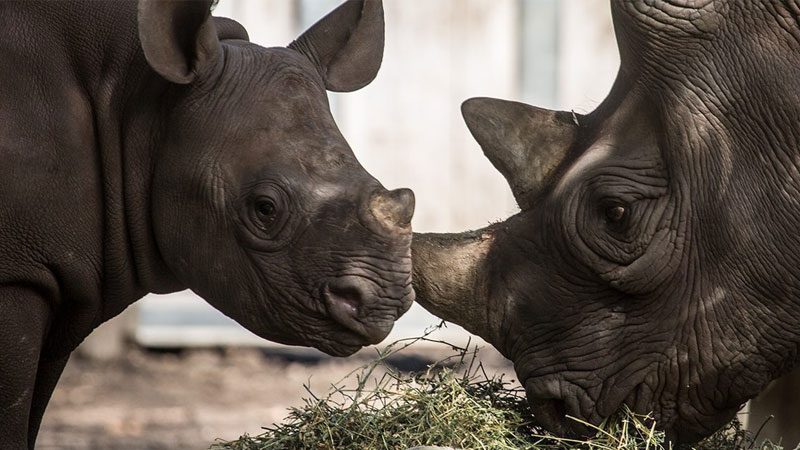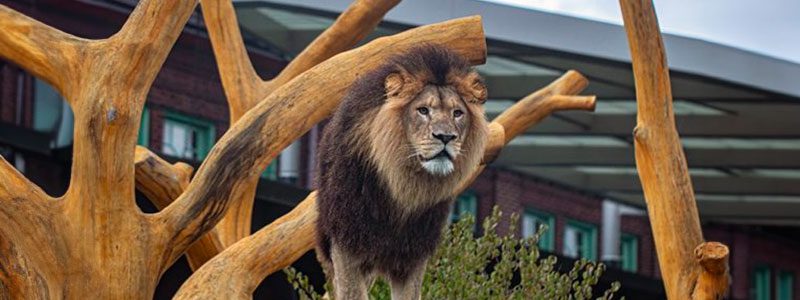Welcome to Lincoln Park Zoo’s new web app! Share your feedback
Eastern Black Rhinoceros
Regenstein African Journey
Did You Know?
- There are five living rhino species: three in Asia and two in Africa. Black rhinos have brown or gray skin, and the “black” may have been added simply to distinguish them from white rhinos, as they do wallow in dark mud to protect from insects and the sun.
- Eastern black rhinos have two horns. Most mammal horns are bone covered in a protein called keratin, but rhino horns are keratin throughout. Keratin makes up many vertebrate structures, from hair and scales to hooves.
- Black rhinos also have a pointed upper lip that is prehensile. It helps them pull leaves from shrubs and bushes.
Don’t See the Animals?
Why aren’t animals visible at all times? To promote positive animal welfare, we provide animals with choices. They can choose to spend time in areas that are out of public view.

Take an Animal Home with You
Overview
Scientific Name: Diceros bicornis michaeli
Class: Mammals
Diet: Mostly leaves and shoots from woody plants
Range: East Africa
Endangered Status: Critically Endangered
More Information
Rhinos are large, heavily built mammals related to horses and tapirs, with tough skin, short legs and a large head. They are about 4.5–6 feet tall at the shoulder and weigh up to 5,000 pounds on average. They have very little hair, except on their tails and ears. They tend to be solitary, except for mothers with calves. Males are territorial, while females are more social. They are most active in the morning and evening. They have poor eyesight, but they can run at 30 miles an hour and go five days without water.
When breeding, pairs may stay together for up to 30 days. Females have a 15–17-month gestation and give birth to one calf, which can weigh up to 100 pounds at birth. Newborns can stand within a few hours of birth and are weaned after one or two years. They become adults at age 4 if female, or age 7 if male. These pachyderms have seen the biggest decline of all rhino species, with numbers dropping 98 percent between 1960–1995 due to poaching. Conservation efforts have helped; there are now a little more than 5,000 mature individuals in the wild.

